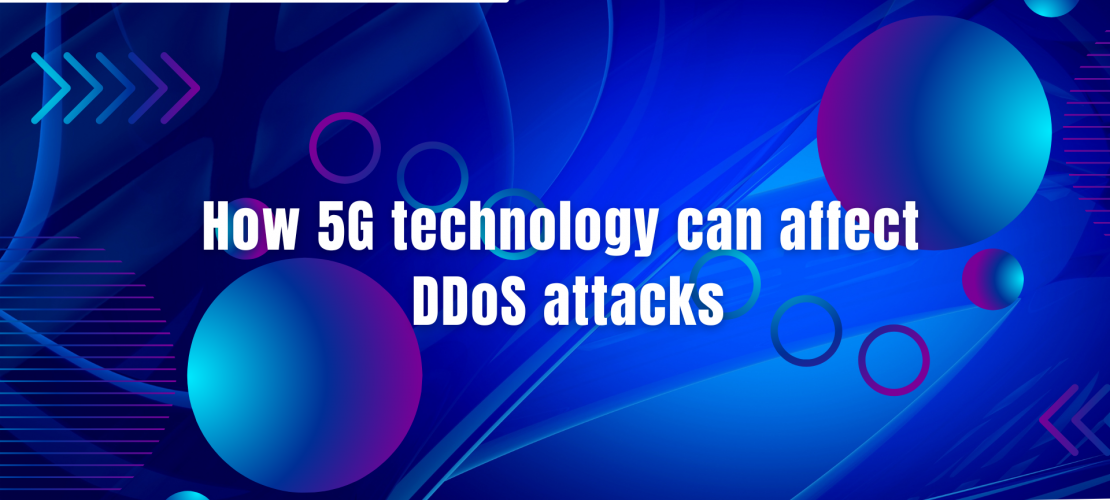The introduction of 5G technology has the potential to bring about a major transformation in the world of connectivity. This next-generation network promises to offer faster speeds, lower latency, and greater capacity, allowing for the widespread adoption of a vast array of connected devices. However, as with any new technology, 5G also presents a number of security challenges, one of which is the increased risk of DDoS (Distributed Denial of Service) attacks.
DDoS attacks have become one of the most significant cyber threats faced by organizations today. In a DDoS attack, a network is flooded with an overwhelming amount of traffic, effectively rendering it unavailable to its users. The attack is carried out using a network of infected computers, known as bots, which are remotely controlled by the attacker. The rise of 5G technology will bring new challenges in preventing DDoS attacks as the number of connected devices increases, and the data transfer speeds become much higher.
One of the main challenges posed by 5G technology is the increased capacity of the network. The 5G network architecture is designed to handle massive amounts of data and connect billions of devices simultaneously. This means that the 5G network will have a higher capacity to support the large-scale DDoS attacks that are becoming increasingly common. Additionally, 5G’s low latency and high speed will allow attackers to carry out DDoS attacks much more efficiently and quickly, making it even more challenging to prevent and defend against these types of attacks.
However, it’s important to note that 5G technology itself is not the cause of DDoS attacks, but rather it provides attackers with a new platform to launch these attacks from. The 5G network architecture also provides new opportunities for organizations to defend against DDoS attacks. For example, 5G networks will allow organizations to distribute their data and processing across multiple nodes, making it much more difficult for attackers to target a single point of failure.

Another challenge posed by 5G technology is the increased number of connected devices. As 5G becomes more widespread, the number of devices connected to the network will increase dramatically, providing attackers with a much larger pool of potential targets. This increase in the number of connected devices will also make it more difficult for organizations to detect and prevent DDoS attacks, as attackers will be able to use a greater number of bots to carry out their attacks.
To defend against DDoS attacks in the 5G era, organizations must adopt a multi-layer security strategy. This may involve implementing firewalls, intrusion detection systems, and load balancing solutions, to name a few. These solutions will help organizations detect and prevent DDoS attacks before they have a chance to cause harm. Additionally, organizations must also be proactive in implementing security measures to protect their networks and connected devices from being compromised by attackers.
One important step in defending against DDoS attacks is to regularly monitor network traffic and detect any suspicious activity. This can be done using network security tools such as intrusion detection systems, which monitor network traffic and identify any patterns of behavior that are indicative of a DDoS attack. By detecting attacks early, organizations can take the necessary steps to prevent the attack from causing significant harm.
Another important step in defending against DDoS attacks is to ensure that all connected devices are properly secured. This involves implementing strong passwords and regularly updating software and firmware to ensure that all devices are protected against the latest security threats. Additionally, organizations must also ensure that their network infrastructure is secure, including routers, switches, and other network components.
- Increased capacity: 5G networks are designed to handle a large amount of data and connect billions of devices simultaneously, which means that the network has a higher capacity to support large-scale DDoS attacks.
- Faster speeds and lower latency: 5G’s fast speeds and low latency make it easier for attackers to carry out DDoS attacks more efficiently and quickly.
- Increased number of connected devices: The widespread adoption of 5G technology will result in a significant increase in the number of connected devices, providing attackers with a larger pool of potential targets.
- Multi-layer security strategy: To defend against DDoS attacks in the 5G era, organizations must adopt a multi-layer security strategy that includes firewalls, intrusion detection systems, load balancing solutions, and other security measures.
- Regular network traffic monitoring: Organizations must regularly monitor network traffic and detect any suspicious activity, such as patterns of behavior indicative of a DDoS attack, to prevent the attack from causing harm.
- Securing connected devices: Organizations must ensure that all connected devices are properly secured and regularly updated to protect against the latest security threats.
- Securing network infrastructure: Organizations must also ensure that their network infrastructure is secure, including routers, switches, and other network components.
In conclusion, 5G technology presents new challenges in preventing DDoS attacks, but also offers new opportunities for organizations to defend against these types of attacks. By adopting a multi-layer security strategy, regularly monitoring network traffic, and properly securing connected devices and network infrastructure, organizations can mitigate the risks posed by DDoS attacks in the 5G era.




